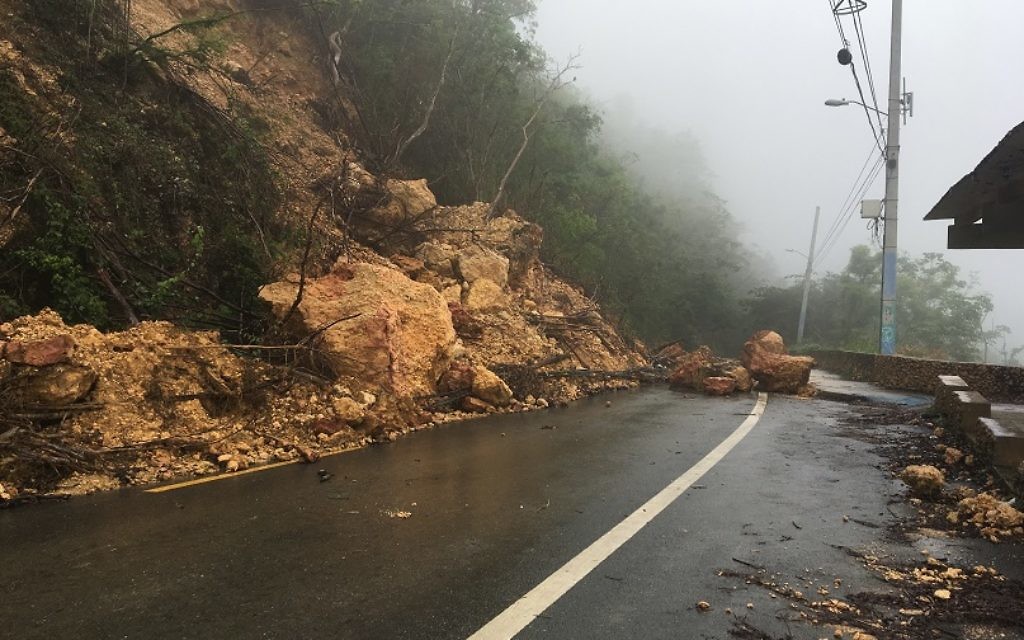Witness to Devastation in Puerto Rico
Morris Maslia spent almost a month helping the island for the CDC in the aftermath of Hurricane Maria.

Much of Puerto Rico remains devastated and faces problems with supplies of power, food and fresh water almost five months after Hurricane Maria swept across the island at Category 4 strength.
The storm killed more than 100 Puerto Ricans, who are American citizens, and the lingering unhealthy conditions are suspected of killing hundreds more.
Atlantan Morris Maslia, then an employee of the Centers for Disease Control and Prevention, spent almost a month working on relief efforts in Puerto Rico. He was able to speak about what he saw there only after retiring from the CDC in December.
Get The AJT Newsletter by email and never miss our top stories Free Sign Up

“You could not understand the devastation and the issues of daily life by just flying over the island,” Maslia said, “unless you got in a car and drove to talk to people, went to the clinics or to a restaurant at night without any traffic lights and everything was pitch dark.”
Maslia worked in Puerto Rico from Oct. 23 to Nov. 20 alongside other volunteers in the Federal Emergency Management Agency’s Emergency Support Functions and National Incident Management System to create a database of supplies the islanders needed, such as clean water and generators.
Other governmental and nongovernmental organizations, such as the Red Cross and the Environmental Protection Agency, were involved in the relief efforts, but Maslia said that if the situation had occurred anywhere else in the United States, the citizens would not have put up with it.
Maslia’s team worked 12 to 14 hours a day, seven days a week, to analyze the commonwealth’s health care system and verify what health clinics and hospitals needed.

Once Maslia and his team determined what provisions were needed, such as food and vaccines, they provided a list to the assistant secretary for preparedness and response at the Department of Health and Human Services, which maintained contact with FEMA.
“People in Puerto Rico were so glad to see us. We would go into these mountainous communities, and they would offer us water, knowing they had a limited supply,” Maslia said. “They were delightful to visit … and appreciated any contact from people from the mainland coming to help them.”
But Maslia found it difficult to reach communities in mountainous regions. “Part of the issue was that you did not have exact coordinates, so you could not locate where the clinics were,” he said. “Some of the roads were not passable, and we had to return to San Juan before dark because by November most of the traffic lights were still not working.”

Maslia’s group found a lack of drinking water and a shortage of uninterruptible electrical power.
Maslia said a lot of the places had their own generators, but they were not meant to run 24/7 or to keep going for 90 days or more.
“In case of an emergency, the hardest thing is the transition from the response to the recovery,” he said. “It was very depressing to see that after such a long period of time, a good portion of the island still did not have running water. There isn’t a portion of the island that isn’t devastated.”
Maslia said many Puerto Ricans, including translators, helped the volunteers as they traveled from one community to another. “They were extremely helpful and wanted to do anything they could, such as getting information from community members as to what they needed and made the logistics much easier.”

Maslia, a Congregation Or VeShalom member, is now retired from the CDC’s Agency for Toxic Substances and Disease Registry. He is a research environmentalist and has a background in water resources and environmental sciences.
He said the most memorable experience he is taking from Puerto Rico is the people’s resilience. “They really believe they are going to come back from this and recover,” Maslia said. “I won’t forget how friendly they were in the face of adversity, and, contrary to what may have been said on the news, there was absolutely no crime. … I never felt I was in danger or feared for my life.”




comments